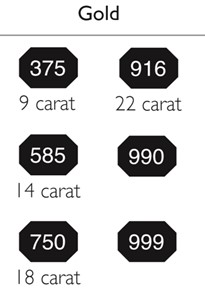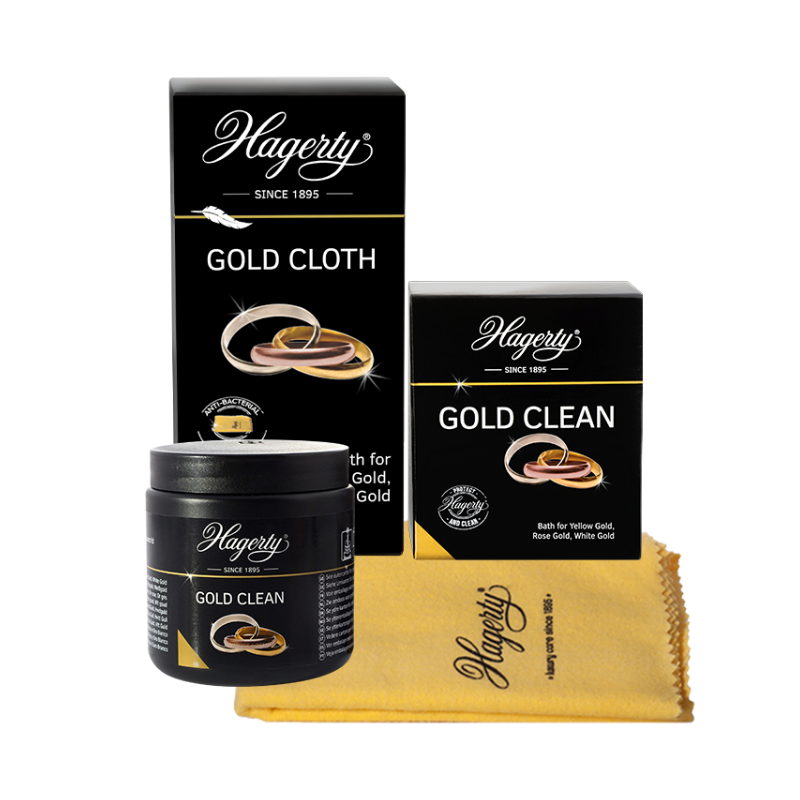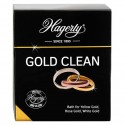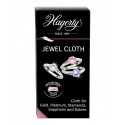13 February 2023
How to recognise a gold jewel?
You have inherited or found a piece of jewellery and you want to know if it is made of gold? You have come to the right place. In addition, it is important to know the metals that make up your jewellery so that you can adopt the appropriate care without damaging it.
How do you know if a piece of jewellery is gold?
There are various tricks to find out if your ring or necklace is made of gold. You may be surprised at the result.
Test with a magnet
Firstly, if you put a magnet near your jewellery, it should not be attracted to it, because gold is not a magnetic metal. If the magnet moves or moves closer, your jewellery is not made of gold.
Wear jewellery
The metal does not discolour or leave a trace on the skin. So, to be sure it is gold, you should wear the jewellery every day, even under water or in hot weather, to see if it changes in appearance.
If the jewellery changes colour or if your skin is marked by a greenish colour, it is not gold.
Use a polishing cloth
You can try polishing your jewellery with a dedicated gold polishing cloth. Simply rub an inconspicuous area of the item gently (as a test) and if it dulls or changes colour, your jewellery is not gold.
Checking the gold hallmark
On precious metals, the hallmark is an indispensable mark to officialise its authenticity and in this case, to indicate the gold content of the jewel.
In the world of jewellery, the carat of gold is designated by the letters "ct", and is a unit of measurement to indicate the purity of a precious metal (not to be confused with the unit of measurement for the weight of a diamond). These are the most commonly used:
24 carat gold
24 carat gold is 99.9% pure gold (the highest percentage we can buy). It corresponds to gold nuggets found in their raw state. However, this type of gold is not used in jewellery because it is too soft. That is why all gold jewellery is made of an alloy of several metals.
We recognise pure gold by its right-facing seahorse hallmark or the number 999.
22 carat gold
22-carat gold is composed of 91.6% pure gold and 8.33% metals such as silver, zinc, copper and other metals to form the alloy. The hallmark is an octagonal eagle head.
You can easily recognize it by the number 916 on the jewel.
18 carat gold
In jewellery, 18 carat gold is known to contain the highest percentage of pure gold (75%). It is reputed to be the most noble and strongest and is often used to create engagement rings.
This solid gold is combined with metals such as copper and silver, and we recognise it by the hallmark bearing the number 750 or a hexagonal eagle head.
14 carat gold
14 carat gold is made up of 58.5% pure gold and 41.5% alloys of other metals (zinc, silver, copper) and its hallmark is a scallop or the number 585.
9 carat gold
Finally, 9-carat gold cannot be called solid gold, but rather a gold alloy. It consists of 37.5% pure gold and 62.5% other metals.
Its low gold content means that it oxidises over time and is therefore not the best choice for creating quality jewellery. Its hallmark is represented by a three-leaf clover or the number 375.

Looking at the colour of gold
To find out if your jewellery is gold, you can also look at the colour of the gold to identify a counterfeit.
Real gold is not supposed to lose its colour or shine over time, so if you notice a slight discolouration in certain areas, your jewellery is definitely gold-plated (or not gold)
Here are the different colours of gold and its most common alloys:
Yellow gold
Yellow gold is the most common, as yellow is the natural colour of this metal. For 18K gold, the composition is generally 75% gold, 12.5% copper and 12.5% silver.
White gold
White gold (or white gold) is the result of an alloy with other metals. In general, 18K white gold is composed of 75% pure gold, to which silver, palladium and copper are added. This alloy is sometimes coated with a thin layer of rhodium to give the jewel a whiter appearance.
Rose gold
Rose gold is made from an alloy of gold, copper and silver: 75% gold, 20% copper and 5% silver.
Seek professional advice
If you are still unsure about the authenticity of your jewellery after these various analyses, we advise you to approach a jeweller in order to obtain an immediate and precise answer.
How do I clean gold jewellery?
As mentioned above, gold should not lose its colour or become dull. However, if you wish to restore the shine of your precious objects, Hagerty offers two different treatments.
In addition, the two cleaning products offered below have the advantage of being reusable over time.
Cleaning Bath
If you want to thoroughly clean your ring, necklace or other gold accessories, we recommend using Gold Clean. This dipping bath will allow you to maintain and restore the shine of yellow, pink and white gold without damaging it and without causing scratches.
The bath contains a basket in which you can gently place the jewellery for a quick and easy cleaning (2 minutes). Then simply rinse and dry the cleaned pieces well. The formula restores the shine and protects your earrings, brooches or other precious objects effortlessly.
Polishing Cloth
To give your gold object a shine or to complete the deep cleaning of your gold object, we recommend using a polishing cloth especially dedicated to the care of gold.
Hagerty offers the Gold Cloth, a soft cloth developed to care for yellow, white or rose gold.
Thanks to the specially impregnated formula in the cloth, your signet ring, bracelet, brooch or other accessory will shine quickly and easily.

How to clean gold jewellery with precious stones?
Hagerty also offers two products for the care of gold or platinum jewellery with precious stones (e.g. rings with diamonds, sapphires or rubies).
These are Jewel Clean, the cleaning bath, and Jewel Cloth, the impregnated cloth. For more information, please visit our website in the Jewellery, Watches and Accessories category.
To take care of diamonds easily and wherever you are, choose the Precious Stones Pencil, a cleaning pen with a gel specially designed for the care of precious stones.
Now you know how to recognize and care for gold jewellery. Do not hesitate to contact us for more information about the care of your jewellery, watches and accessories: hagerty@hagerty.world




